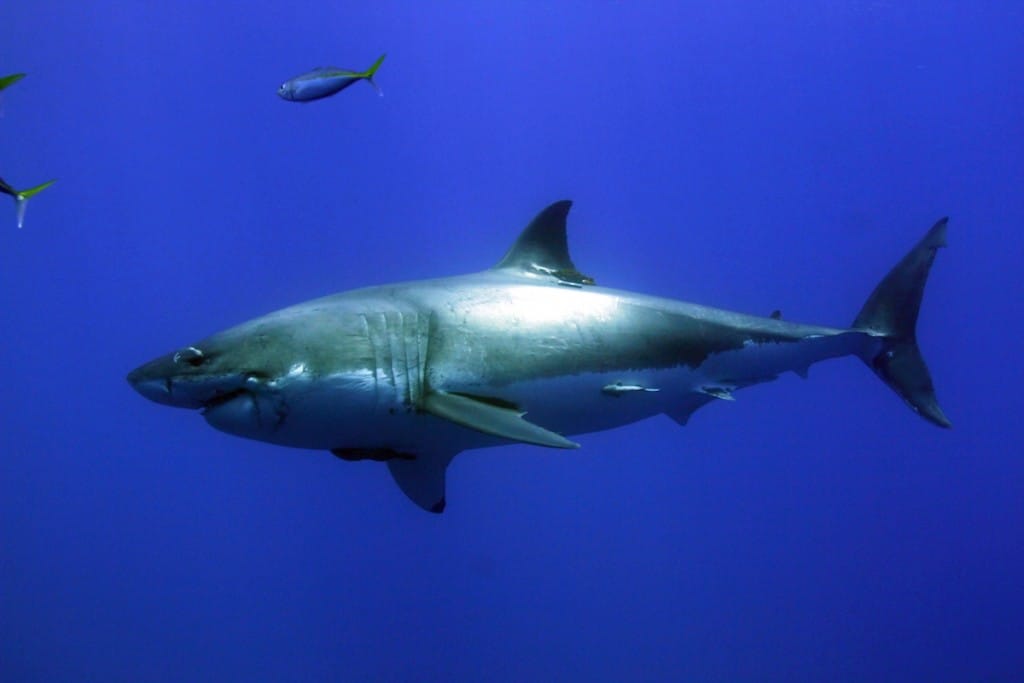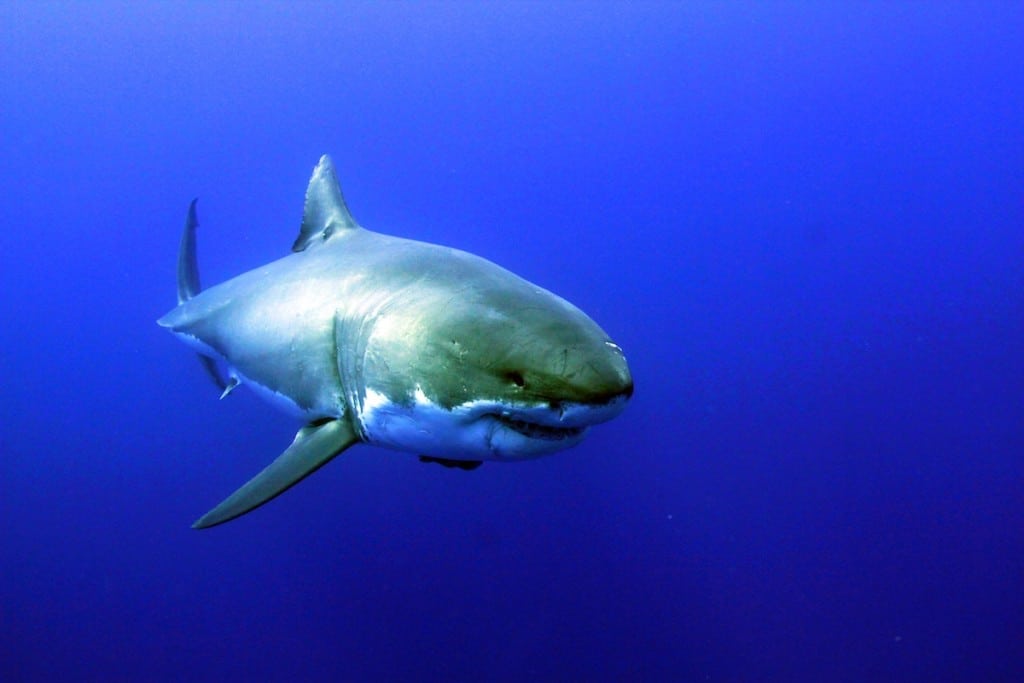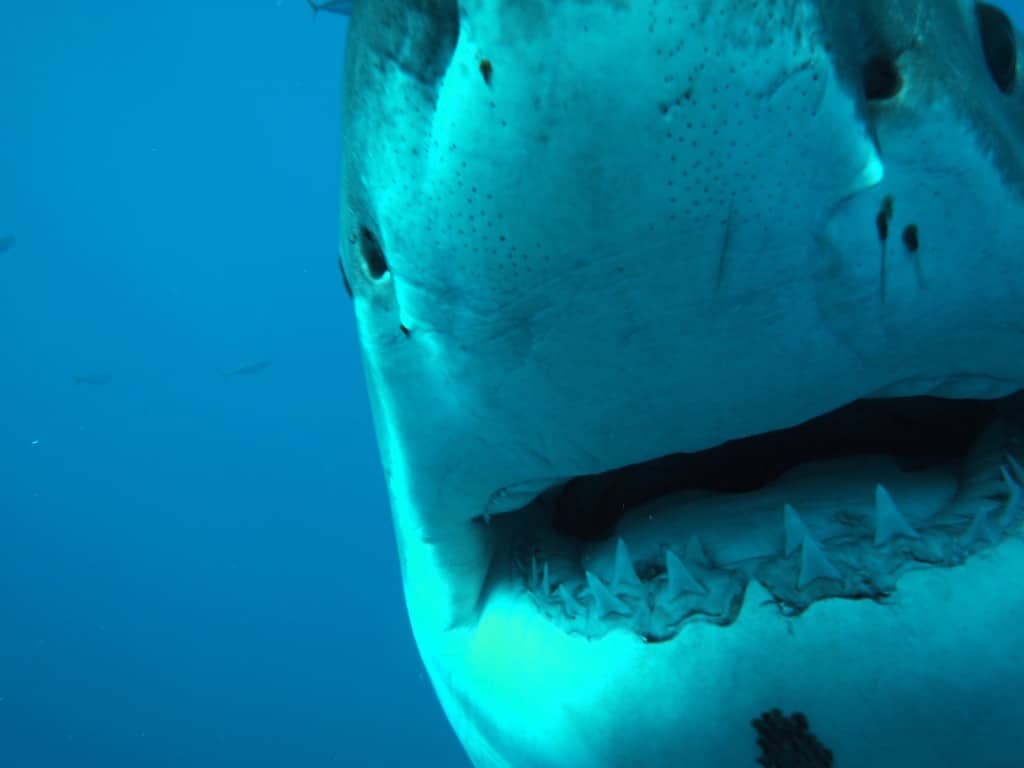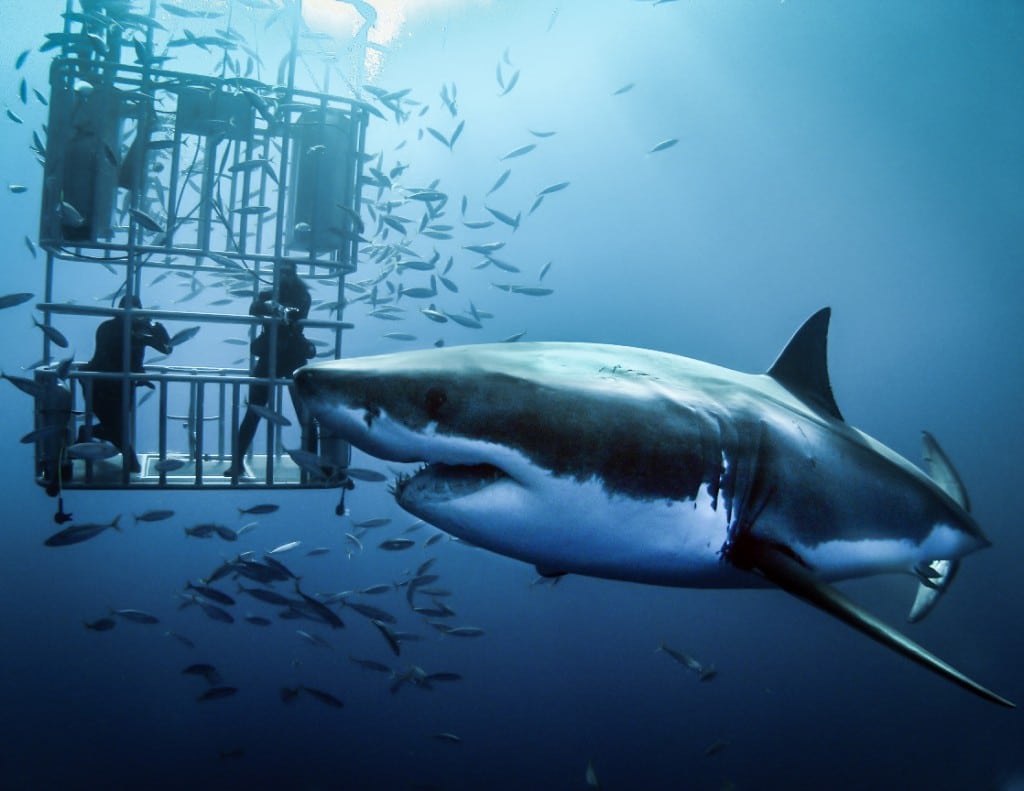Marine Life & Conservation Blogs
Caught by the Spell of a Myth

“The Great White Shark jangles our nerves
With a reputation he hardly deserves
Neither malice nor spite
Will cause him to bite
It’s not his fault we look like hors d’oeuvres.”
R. Aiden Martin
57 years ago, the publisher of the US magazine “LIFE” warned its readers in the cover story “Look out for sharks” of the danger of shark attacks. The total number would not be terrible (because very low) but of the cruel attack itself, he said:
“During 1959, sharks made 11 authenticated attacks on human beings in U.S. waters. Three of them were fatal. The number is not enormous, but the victims died deaths of horror – dismembered bite by bite as their executioners struck and turned, struck and turned again.” LIFE Magazine 11. July 1960

15 years later, a movie managed to spread real fear and terror. From now on, the sea was no longer seen only as a place for leisure and water sports but as a place where evil resides. This movie was “Jaws”. What many viewers did not know at the time was that the film resembles true events. In 1916, a shark on the New Jersey coast attacked five swimmers within twelve days – a man-eater! Even the words “man-eater” are deeply troubling…
This term makes millennia of human development null and void and takes us back to our beginnings as pitiful hominids roaming the African steppe, the region where the cradle of humanity stood. They crouched in fire-less caves, always on guard, always in fear that death lurked in the tall grass – or in the water. The idea of being eaten alive violates the dignity of man, undermining the sacred belief that we are ‘something better’ or ‘the crown of creation,’ as we like to call ourselves.
The shark tells us with his actions: “I do not care if you’re President of the United States, the Queen of England or just the average Joe, for me you’re not a ‘coronation’, you are the same as a seal or a dolphin – a protein supplier. Honestly, I prefer to chase you, because you are weak and slow.”
Sharks and crocodiles attack people. Amongst the big cats, leopards are even more feared human hunters than lions and as the peasants of India and Indonesia know, human flesh is also on the tiger’s menu. Although sharks rarely ‘eat’ people, they are considered to be monsters par excellence – perhaps because the shark is so deeply rooted in collective popular beliefs as no other predator. It is the center of a tradition that goes back to a time long before man began writing down the myths and legends that circulated around the campfire of fishermen.
In this sense, the book “Jaws” by Peter Benchley may be considered a saga in which myth and reality merge. The book recollects actual occurrences (albeit greatly exaggerated) but reads like an adventure novel. Action and topic make up his success. It does not only give you shivers down your spine, like a good horror story about occultism, it goes far deeper.

The film by Steven Spielberg is even worse. Relentlessly, he lets him strike again on the American East Coast. He does not just pick up on the historical events of 1916. He depicts the animal with a lot of aggressiveness, strength and human intelligence. A monster. He penetrates into the subconscious and gets stuck there – because you know that the story is somehow based on facts and not the abstruse fantasies of a fanciful Hollywood director.
This shark really lived (although it is doubtful if only one shark was responsible for all of the attacks). His victims were real, normal people. One suffers a kind of metaphysical shock.
Are we actually the crown of creation when a fish – a fish! – turns us so fast and easy into simple prey? The idea of being dead doesn’t scare us modern people. But the process and way of dying terrifies us. But one should not ask such a question – and certainly not answer it. Sharks do not submit to humans – and they do not recognize our alleged superiority. And so, it is hard for us to imagine that we, too, can be part of the food chain (and not at the very top) because we no longer feel as a part of nature.
In our over-mapped, overpopulated, over-explored world, it’s not often that an animal gives up such mystery. But we do not need to know everything. Some things are in good hands in the fog of secrets and mystery. I am glad that there are still unresolved questions, because after all they are the ones who stimulate the imagination. Sharks are beautiful in a scary way and the epitome of all the unknowns that still exist apart from our civilization.

In a time when human mastery of our terrestrial realm grants us the illusion that we can control everything from atoms and genes, to the destiny of our planet, it is humbling that something as simple as a big fish can put us back in our place.
In a 1987 interview with Time magazine, “Far Side” cartoonist Gary Larson put our situation into irreverent and incisive perspective: “I think it’s wonderful that we live in a world in which there are things that can eat us. It keeps us from getting too cocky.”
Food for thought?
Marine Life & Conservation Blogs
Creature Feature: Dusky Shark

 In this series, the Shark Trust will be sharing amazing facts about different species of sharks and what you can do to help protect them.
In this series, the Shark Trust will be sharing amazing facts about different species of sharks and what you can do to help protect them.
This month we’re taking a look at the Dusky Shark, a highly migratory species with a particularly slow growth rate and late age at maturity.
Dusky sharks are one of the largest species within the Carcharhinus genus, generally measuring 3 metres total length but able to reach up to 4.2 metres. They are grey to grey-brown on their dorsal side and their fins usually have dusky margins, with the darkest tips on the caudal fin.
Dusky Sharks can often be confused with other species of the Carcharhinus genus, particularly the Galapagos Shark (Carcharhinus galapagensis). They have very similar external morphology, so it can be easier to ID to species level by taking location into account as the two species occupy very different ecological niches – Galapagos Sharks prefer offshore seamounts and islets, whilst duskies prefer continental margins.
Hybridisation:
A 2019 study found that Dusky Sharks are hybridising with Galapagos Sharks on the Eastern Tropical Pacific (Pazmiño et al., 2019). Hybridisation is when an animal breeds with an individual of another species to produce offspring (a hybrid). Hybrids are often infertile, but this study found that the hybrids were able to produce second generation hybrids!
Long distance swimmers:
Dusky sharks are highly mobile species, undertaking long migrations to stay in warm waters throughout the winter. In the Northern Hemisphere, they head towards the poles in the summer and return southwards towards the equator in winter. The longest distance recorded was 2000 nautical miles!
Very slow to mature and reproduce:
The Dusky Shark are both targeted and caught as bycatch globally. We already know that elasmobranchs are inherently slow reproducers which means that they are heavily impacted by overfishing; it takes them so long to recover that they cannot keep up with the rate at which they are being fished. Dusky Sharks are particularly slow to reproduce – females are only ready to start breeding at roughly 20 years old, their gestation periods can last up to 22 months, and they only give birth every two to three years. This makes duskies one of the most vulnerable of all shark species.
The Dusky Shark is now listed on Appendix II of the Convention on the Conservation of Migratory Species (CMS), but further action is required to protect this important species.
Scientific Name: Carcharhinus obscurus
Family: Carcharhinidae
Maximum Size: 420cm (Total Length)
Diet: Bony fishes, cephalopods, can also eat crustaceans, and small sharks, skates and rays
Distribution: Patchy distribution in tropical and warm temperate seas; Atlantic, Indo-Pacific and Mediterranean.
Habitat: Ranges from inshore waters out to the edge of the continental shelf.
Conservation status: Endangered.
For more great shark information and conservation visit the Shark Trust Website
Images: Andy Murch
Diana A. Pazmiño, Lynne van Herderden, Colin A. Simpfendorfer, Claudia Junge, Stephen C. Donnellan, E. Mauricio Hoyos-Padilla, Clinton A.J. Duffy, Charlie Huveneers, Bronwyn M. Gillanders, Paul A. Butcher, Gregory E. Maes. (2019). Introgressive hybridisation between two widespread sharks in the east Pacific region, Molecular Phylogenetics and Evolution 136(119-127), https://doi.org/10.1016/j.ympev.2019.04.013.
Marine Life & Conservation Blogs
Creature Feature: Undulate Ray

 In this series, the Shark Trust will be sharing amazing facts about different species of sharks and what you can do to help protect them.
In this series, the Shark Trust will be sharing amazing facts about different species of sharks and what you can do to help protect them.
This month we’re looking at the Undulate Ray. Easily identified by its beautiful, ornate pattern, the Undulate Ray gets its name from the undulating patterns of lines and spots on its dorsal side.
This skate is usually found on sandy or muddy sea floors, down to about 200 m deep, although it is more commonly found shallower. They can grow up to 90 cm total length. Depending on the size of the individual, their diet can range from shrimps to crabs.
Although sometimes called the Undulate Ray, this is actually a species of skate, meaning that, as all true skates do, they lay eggs. The eggs are contained in keratin eggcases – the same material that our hair and nails are made up of! These eggcases are also commonly called mermaid’s purses and can be found washed up on beaches all around the UK. If you find one, be sure to take a picture and upload your find to the Great Eggcase Hunt – the Shark Trust’s flagship citizen science project.
It is worth noting that on the south coasts, these eggcases can be confused with those of the Spotted Ray, especially as they look very similar and the ranges overlap, so we sometimes informally refer to them as ‘Spundulates’.
Scientific Name: Raja undulata
Family: Rajidae
Maximum Size: 90cm (total length)
Diet: shrimps and crabs
Distribution: found around the eastern Atlantic and in the Mediterranean Sea.
Habitat: shelf waters down to 200m deep.
Conservation Status : As a commercially exploited species, the Undulate Ray is a recovering species in some areas. The good thing is that they have some of the most comprehensive management measures of almost any elasmobranch species, with both minimum and maximum landing sizes as well as a closed season. Additionally, targeting is entirely prohibited in some areas. They are also often caught as bycatch in various fisheries – in some areas they can be landed whilst in others they must be discarded.
IUCN Red List Status: Endangered
For more great shark information and conservation visit the Shark Trust Website
Image Credits: Banner – Sheila Openshaw; Illustration – Marc Dando
-

 News3 months ago
News3 months agoHone your underwater photography skills with Alphamarine Photography at Red Sea Diving Safari in March
-

 News2 months ago
News2 months agoCapturing Critters in Lembeh Underwater Photography Workshop 2024: Event Roundup
-

 Marine Life & Conservation Blogs2 months ago
Marine Life & Conservation Blogs2 months agoCreature Feature: Swell Sharks
-

 Blogs2 months ago
Blogs2 months agoMurex Resorts: Passport to Paradise!
-

 Blogs2 months ago
Blogs2 months agoDiver Discovering Whale Skeletons Beneath Ice Judged World’s Best Underwater Photograph
-

 Gear News3 months ago
Gear News3 months agoBare X-Mission Drysuit: Ideal for Both Technical and Recreational Divers
-

 Gear Reviews2 months ago
Gear Reviews2 months agoGear Review: Oceanic+ Dive Housing for iPhone
-

 Marine Life & Conservation2 months ago
Marine Life & Conservation2 months agoSave the Manatee Club launches brand new webcams at Silver Springs State Park, Florida






















